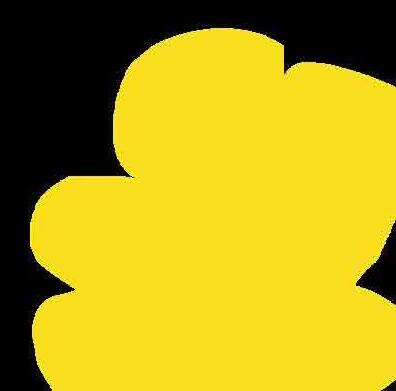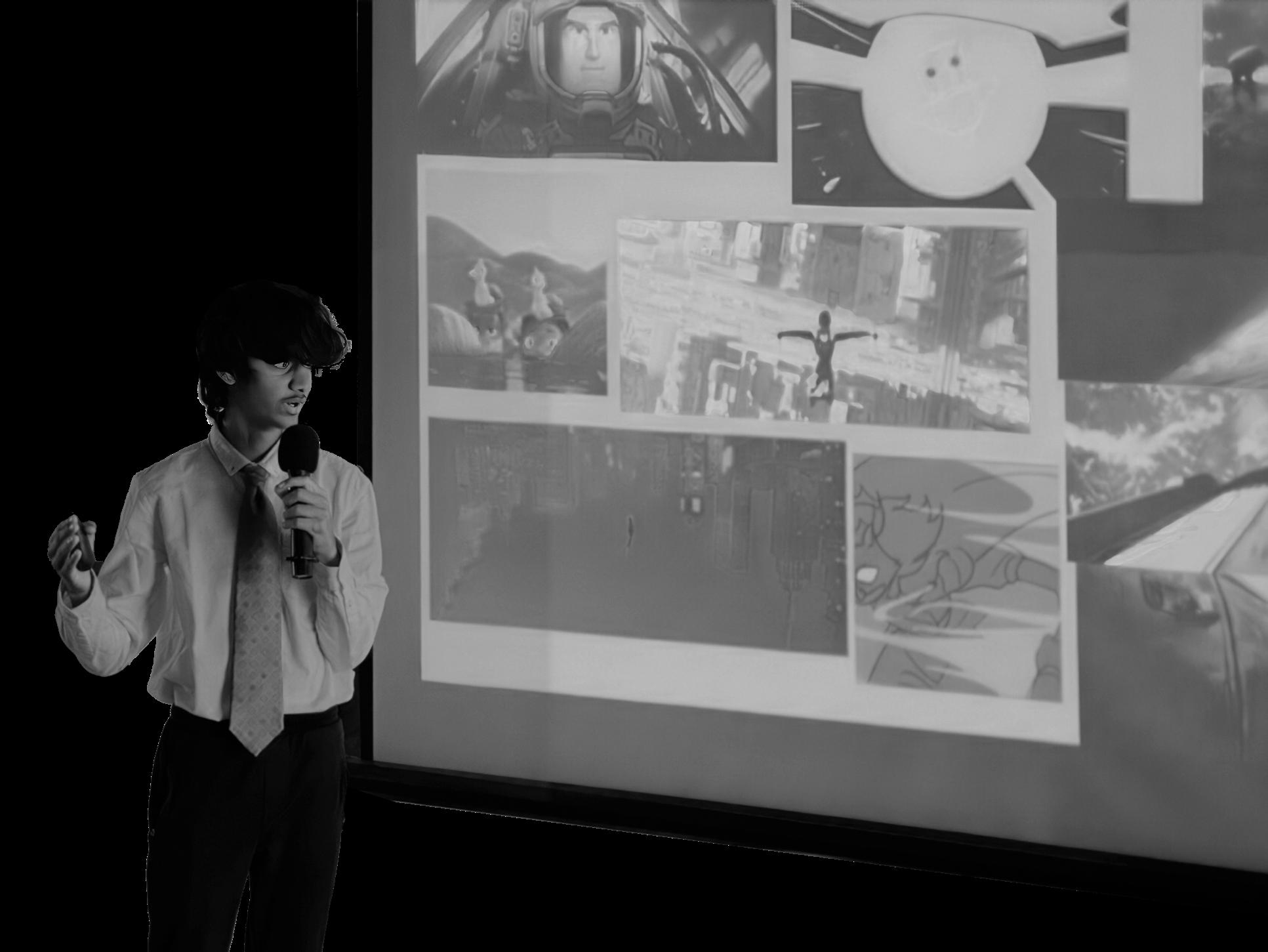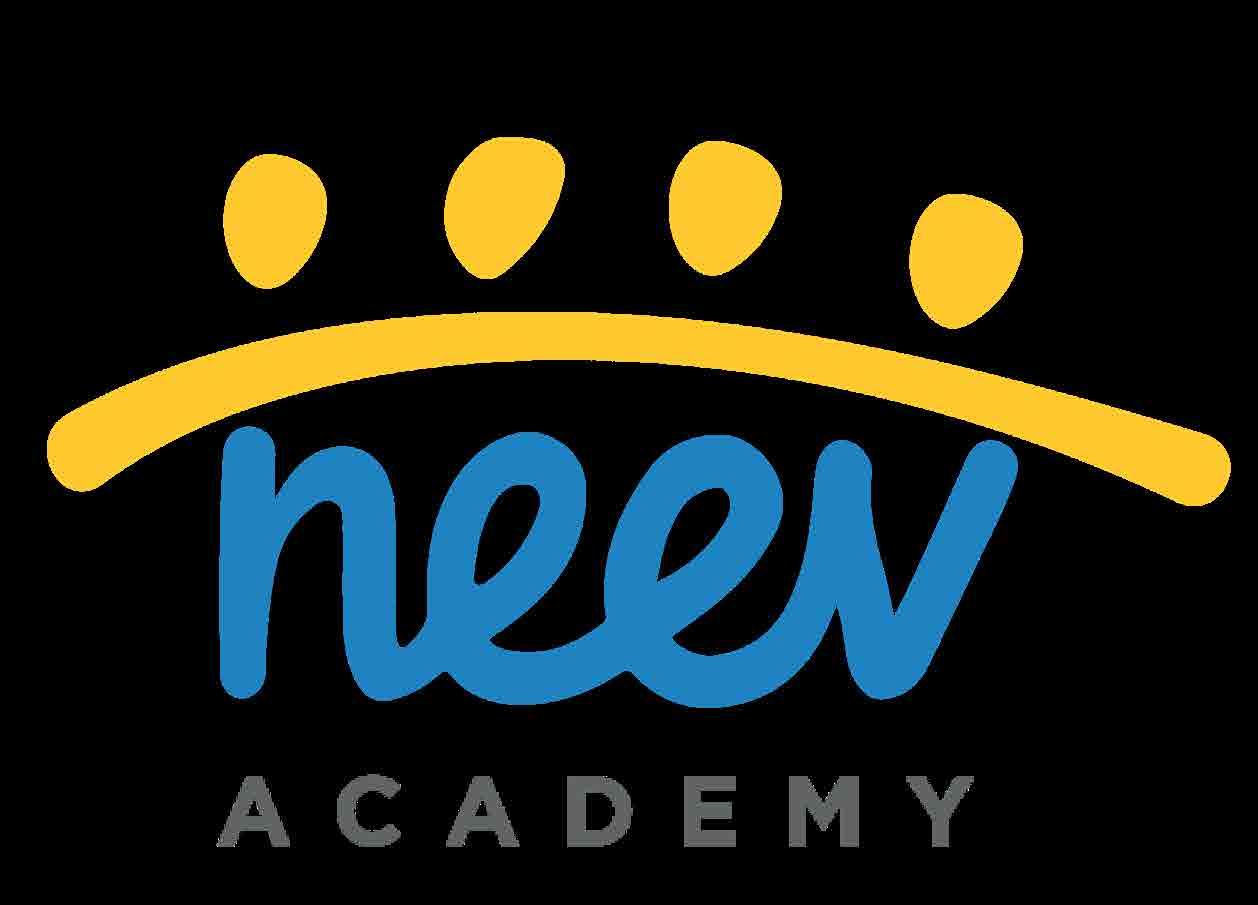
Projects showcasing extraordinary research, discovery and presentations
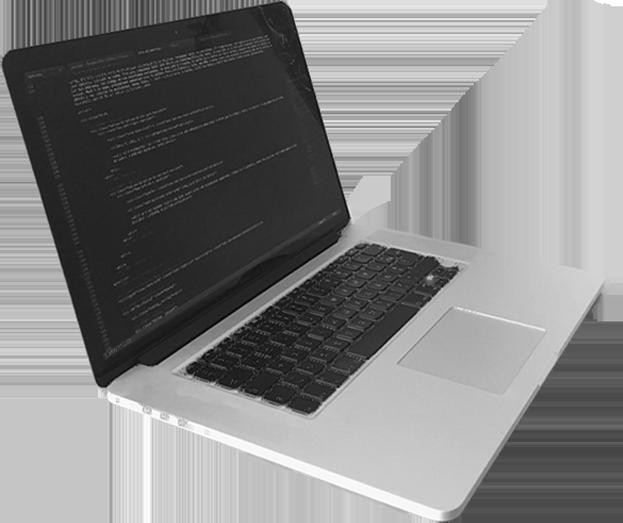
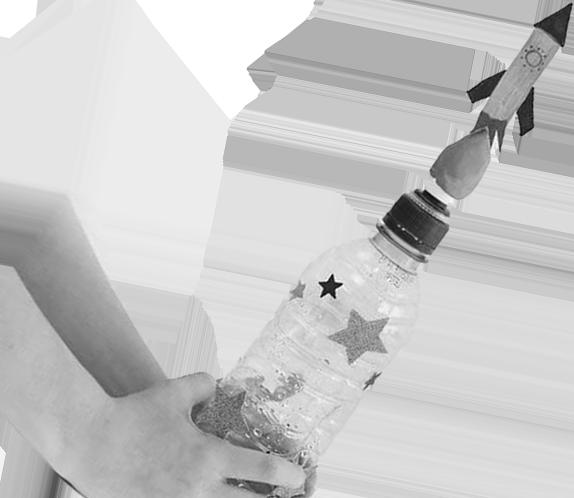



Projects showcasing extraordinary research, discovery and presentations



The global context my project best relates to is Scientific and Technical Innovation. I have investigated both traditional and newer vaccine technologies that humans have innovated in response to catastrophe, that are based on scientific principles and biological mechanisms.
The key concepts that can be identified for your project

Innovation of vaccines over time, change in the vaccine mechanisms employed, and the profound impact of this on humanity; communication of acquired knowledge regarding the immune systems and vaccine technologies in a creative video, using analogies, skits and effects; communities by emphasising the need of collective action and by advocating for annual Influenza vaccination Factual
What is the structure of the virus SARS-CoV-2, how does it infect cells and replicate?
What is the human body’s innate and adaptive immune response, and how do vaccines take advantage of it?
What are the conventional and platform vaccine technologies, and what is the science behind them?
How does the immune response induced differ for different types of vaccines?
How is efficacy of a vaccine measured?
What is the comparative efficacy of different COVID-19 vaccines? What is the structure of the Influenza A virus and what are the Influenza vaccines?
What factors should we consider when determining the efficacy or effectiveness of a vaccine?
What ethical implications does one consider when creating an educational video regarding vaccines, and when advocating for vaccination?
Creating and editing videos on DaVinci Resolve 18
The personal project was the first instance of longterm, insightful inquiry into a topic of my choice, and I truly understood the value of primary sources of data as an inquirer. I used to be accustomed to surfing websites, picking up knowledge and information to understand the topic without a clear idea of the boundaries to my research - my usage of primary sources was merely to gain additional insights about perspectives regarding the topic. Through my personal project, I instead began my investigation with primary sources, and interactions with experts around the world. I built on my general understanding by gaining valuable insights from experienced experts, picking up technical vocabulary and understanding the developments in the area from working professionals. I used further secondary sources to engage in meaningful inquiry and to develop my understanding of topics introduced or emphasised by the experts, such as Dr. Durbin’s description of lipid nanoparticles. This allowed me to gain clarity of which areas to focus on and how much detail to get into. I consulted my primary sources for any doubts or further questions.
I greatly developed as a communicator. Apart from learning how to communicate reliable scientific knowledge appropriately and in an engaging manner with regards to a target audience and purpose,
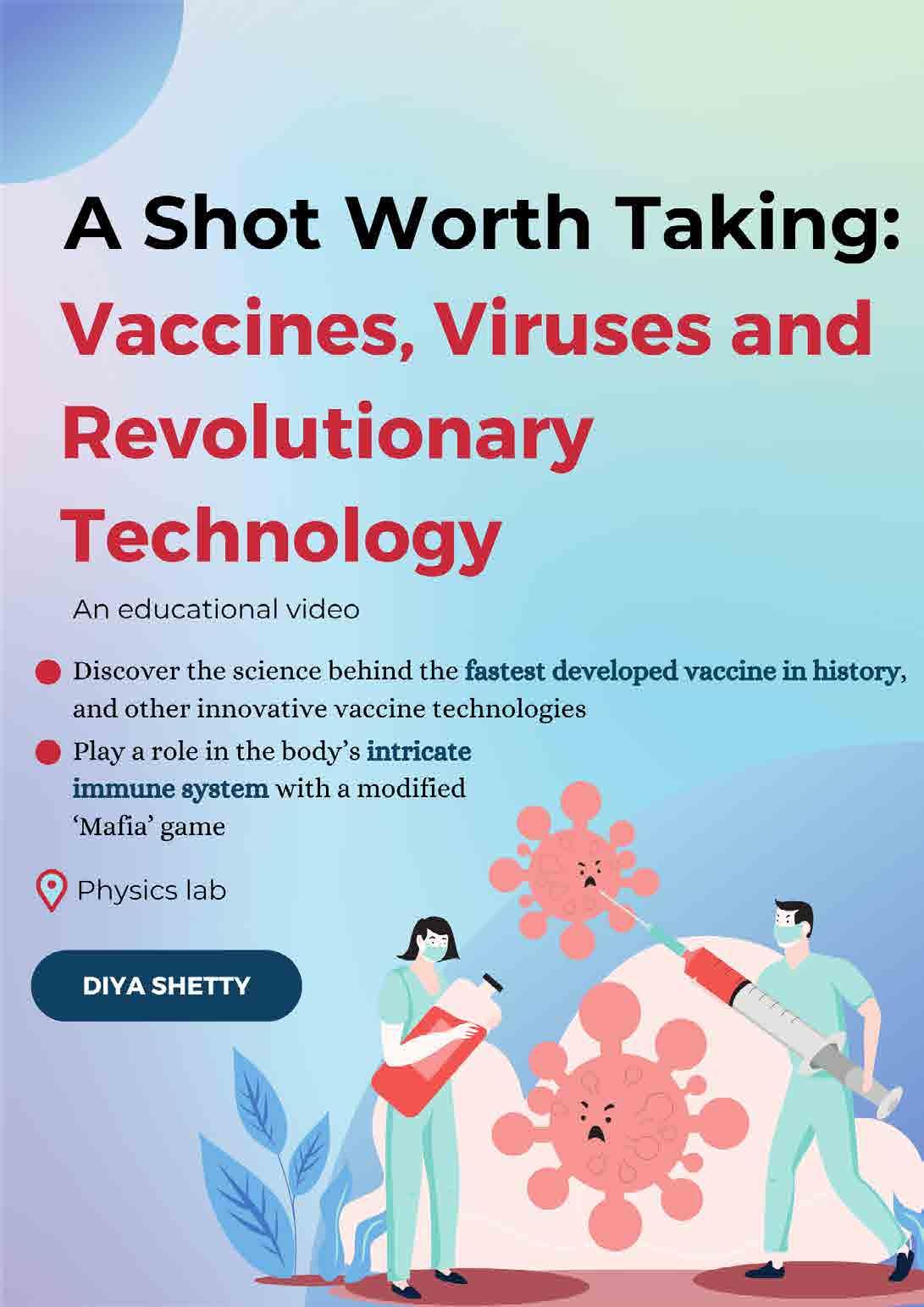
I developed the skill of learning how to have an insightful interaction with an expert. With my first few interactions, I learnt how to formulate relevant and open-ended interview questions most suited the interviewee. As I engaged in more conversations, I realised that it is more than asking questions and receiving answers - as a student conducting an in-depth investigation in a topic of interest, I can express my own views based on the knowledge I have acquired, introduce opposing perspectives from other experts, discuss them, bringing in evidence and meaningful content that will help me learn more. While speaking to Dr. Varadarajan, who developed a “heat-tolerant” recombinant protein subunit COVID-19 vaccine, we discussed advantages of working with smaller bits of protein in terms of stability, but I also brought in possible disadvantages to the vaccine type such as storage. This allowed me to discover the expert’s inputs regarding the standardisation of the manufacturing process in comparison to mRNA, and drove the conversation further. I improvised questions based on previous responses to have an organic discussion. I would consider this a kind of intellectual conversation rather than a formal interview.
By acknowledging my nature as a perfectionist who looks at the details, I was able to become reflective, and objectively evaluate my strengths and weaknesses. I realised that I was effectively able to develop knowledge and keep track of my own progress in an organised manner, asking perceptive questions and coordinating with experts easily. However, I sometimes wasted a lot of time obsessing over minor details rather than looking at the bigger picture. Additionally, I came to the conclusion that while it was easy for me to dive into the depths of the vast amounts of knowledge I was obtaining, I needed to consider the impact of this acquired knowledge. I realised the importance of making this accessible to my target audience through my product.
As a thinker, I developed the ability to exercise initiative in making reasoned, ethical decisions regarding the extent of content in my video and the communication of subject matter in a sensitive yet objective and informative manner. I took care to ensure that no subconscious biases could arise by excluding percentages of efficacy data for different vaccine types in my final product. Creative-thinking is also one skill that I have greatly developed. As an individual, I tend to be analytical and logical, and it takes effort for me to experiment with creative ideas. Initially, I started at being able to come up with simple representations of core scientific concepts, such as an intruder representing a virus. Through the personal project, I took these forward and refined their elements to develop fully fledged analogies. I let myself try out ideas that I would normally consider absurd, and I was pleasantly surprised with the results. As a learner, I realised the value of visual thinking strategies in the brainstorming process, such as storyboarding and flowcharts, to overcome challenges with thinking out of the box.
I faced challenges with navigating the features and effects of DaVinci Resolve - though I had online courses and books at my disposal, many of the tips given involved did not work for me. Some of the keyboard shortcuts provided did not work with my laptop, possibly because the version at the time of filming the course was older or a different laptop type/version was being used. To overcome this challenge, I learnt to be adaptive, referring to my own keyboard shortcuts for help, and simply exploring the software myself.
The personal project was the first instance of longterm, insightful inquiry into a topic of my choice, and I truly understood the value of primary sources of data as an inquirer. I used to be accustomed to surfing websites, picking up knowledge and information to understand the topic without a clear idea of the boundaries to my research - my usage of primary sources was merely to gain additional insights about perspectives regarding the topic. Through my personal project, I instead began my investigation with primary sources, and interactions with experts around the world. I built on my general understanding by gaining valuable insights from experienced experts, picking up technical vocabulary and understanding the developments in the area from working professionals. I used further secondary sources to engage in meaningful inquiry and to develop my understanding of topics introduced or emphasised by the experts, such as Dr. Durbin’s description of lipid nanoparticles. This allowed me to gain clarity of which areas to focus on and how much detail to get into. I consulted my primary sources for any doubts or further questions.
I greatly developed as a communicator. Apart from learning how to communicate reliable scientific knowledge appropriately and in an engaging manner with regards to a target audience and purpose, I developed the skill of learning how to have an insightful interaction with an expert.
Through this personal project, I received the opportunity to develop a deeper knowledge and understanding of my areas of inquiry. Beginning with little to no knowledge of immunology, I explored the components of the innate immune response, the mechanisms involved in the humoral and cell mediated adaptive response, as well as the characteristics of the specialised phagocytes and lymphocytes involved. After researching about the science behind conventional and platform vaccine technologies, I extended this knowledge by investigating what makes the induced response of technologies differ, allowing me to explore MHC Class I and Class II in relation to CD8 and CD4 T cell responses. At the beginning of my personal project journey, I had some prior knowledge regarding the general structure of a virus, and how viruses hijack host cells. I now understand deeper intricacies of these mechanisms, specifically for Covid-19 and Influenza.
I have inquired into the design of pre-clinical animal trials, stages of clinical trials and the measurement of vaccine ‘efficacy’. A culmination of this understanding allowed me to compare the efficacy of Covid-19 vaccines and advocate for Influenza vaccination, which I used to have limited verified knowledge regarding despite living through the pandemic.
I used to know how to use basic video editing features on iMovie. To produce my product, I developed the skills of navigating the cut, fusion and edit page on DaVinci Resolve 18, practising extensive video editing (including effects and transitions) and layering. I also practiced filming and some directing by collaborating with my peers. Conceptually, I have understood that even science is not black and white - there is no clear, ‘right’ answer to questions like the goal of a vaccine, which vaccine technology is the best, or how efficacious a vaccine is, as there are deeper nuances to be taken into account. I have developed an understanding of the scientific concept of ‘systems’, through the fascinating interconnected constituents of our immune system, as well as human systems such as clinical trials designed to best test interventions like vaccines.
This personal project has been a pivotal experience in my journey of academic exploration, and I have thoroughly enjoyed both the inquiry process as well as the content of exploration. I hope to continue to interact with experts in the field, explore research opportunities and internships, and to further pursue immunology and medical research relating to vaccines. I believe that it is something I truly enjoy and that is meaningful in the world. Most importantly, the personal project has renewed my love for learning and I have regained confidence in my own abilities.
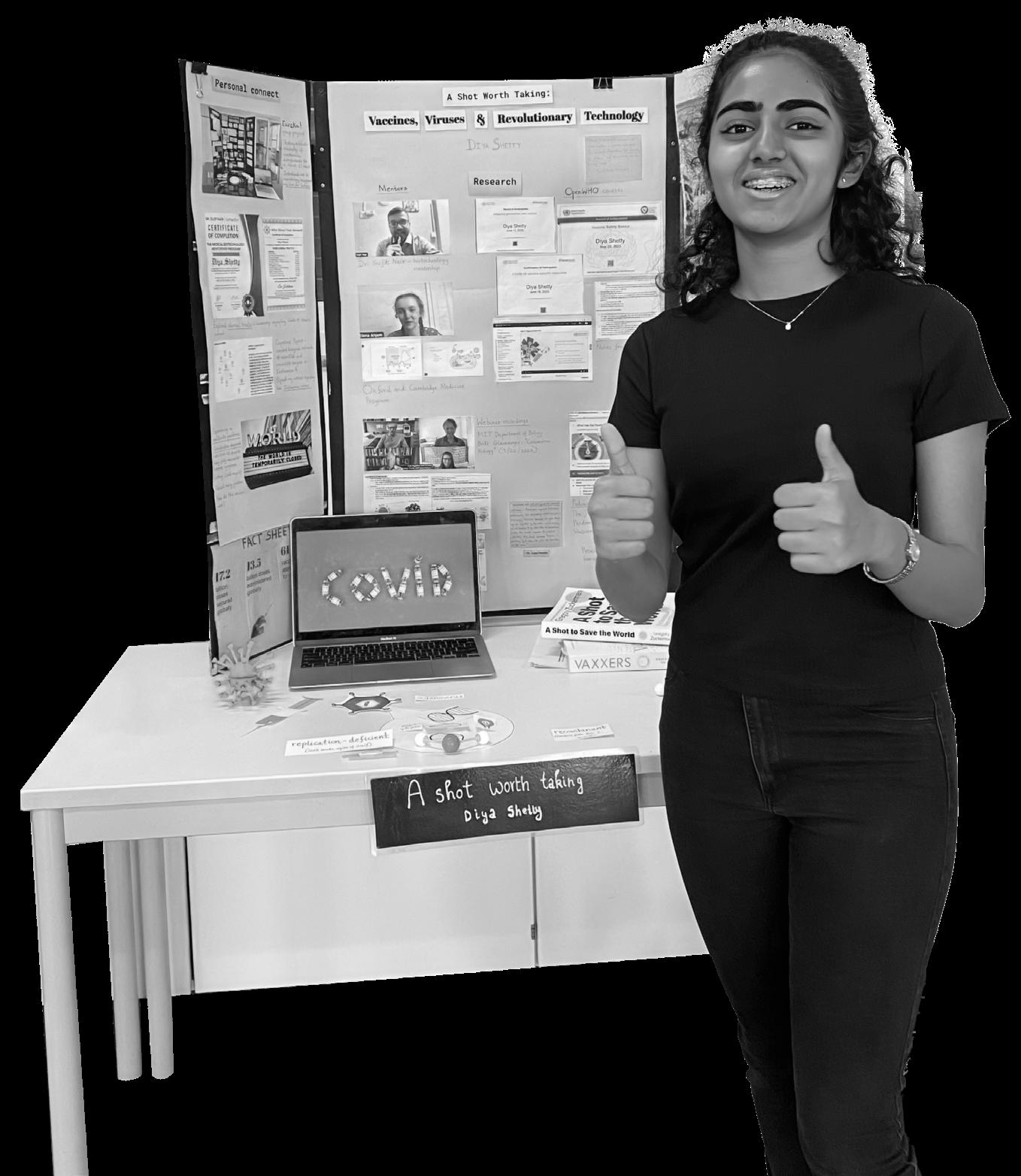

The global context my project is best aligned to is scientific and technological innovation. This is because I plan to inquire into the science behind migration. Through this project, I will be exploring the natural world and its laws, the interactions between people and nature, how we understand the world through scientific principles, and how the environment affects human systems and vice versa, all of which are part of the description for this global context. Explorations such as systems, models and processes will play an integral role during my inquiry and understanding natural adaptations will help me understand the concept as a whole.
Investigating the relationship between geography, climate, genetics & migratory routes
The entire project is centered around birds changing their breeding and wintering grounds in accordance to seasonal cycles
Time, place and space - the relationship between travel, migratory timelines and temporal seasonal cycles highlights the interconnectedness of time, place and space
Knowledge-based (Factual)
How are birds able to fly? What is the physics behind bird flight?
What are the types of migration observed in birds?
Which migratory birds are found across India? What time of year do they come?
What routes do these migratory birds follow?
What physiological mechanisms have birds adapted for migration (navigation, regulation, energy etc.)?
Concept-based (Conceptual)
How do natural factors determine migratory routes?
Why is migration an ecological necessity for birds?
How has migration evolved in birds?
Perspective-based (Debatable)
How do human actions affect migratory birds? Is it negative or positive?
There were 2 main challenges I faced while doing this project. The first was pressure from academic tasks that left me with less time to work on my personal project, and the second was deciding on how to best prioritise sources due to the high cost and time requirements of some courses.
I overcame the first challenge by tweaking my schedule. Because of the high amount of studying I had to do in lieu of the coming term exams, my initial plan of doing a few hours of schoolwork and a few hours of personal project each day was not feasible. Instead, I decided to finish most of my product work between September and the beginning of November, capitalising on the one week long Dussehra holiday to finish most of my videos. During this period I tried finishing most of my schoolwork during the car ride home to leave the rest of my day free to get a lot of work done for my videos. Post October, I had finished all my videos using this new plan and so I had most of my time free for studying.
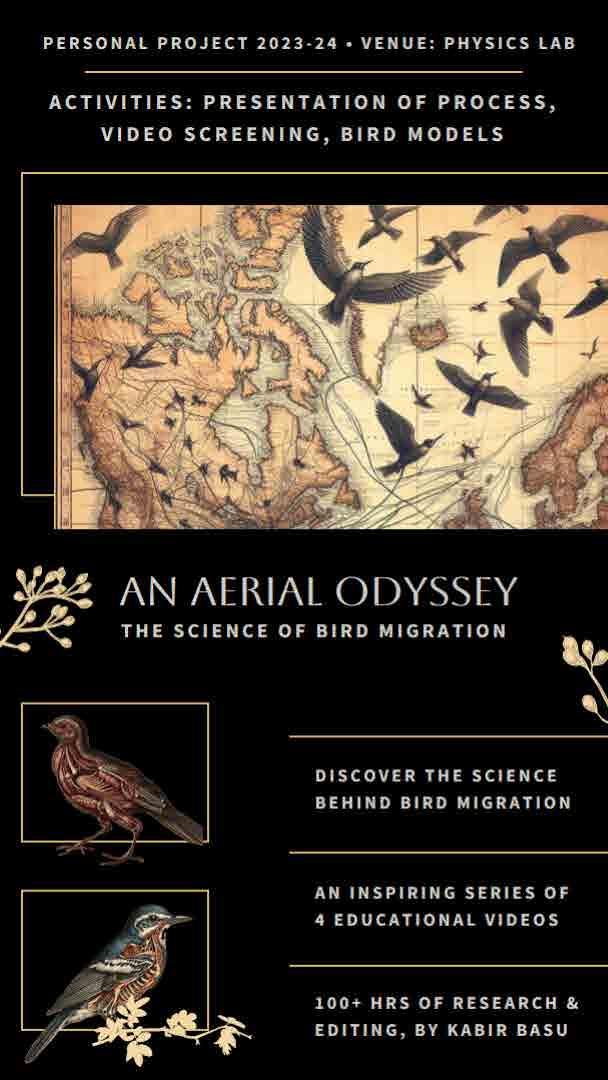
I overcame the second challenge by making a list of all the sources I planned to use for my learning and compare them to find out which ones would be the most effective. Using this solution was vastly beneficial and taught me the importance of analysis and thinking routines, as a source I had previously considered imperative for my research, the Course on Basic Bird Biology, turned out to be one that I did not use due to the fact that out of the entire subject matter only a small handful of modules were dedicated to migration, and completing all 100 hours of the course for the hefty price would not be efficient for the small amount of information.
This entire project truly brought with it a whole load of new experiences, where I did things I’d never imagine myself doing normally, like staying at week-long camps without parents, travelling in a night bus alone to a forest for a course on ecology, and even tracking birds late into the night just using their calls. My course at IISER Tirupati on ornithology was one of the most eye-opening experiences for me, where I experienced campus life for the first time - surviving on canteen food, missing all my alarms but waking up in the nick of time, and even playing basketball with my friends at 2 in the night, oblivious to the fact that we had an excursion at 4:00 AM the next day. The new activities I participated in were all amazing, from painting birds for the first time, to making a presentation about our biodiversity data with my camp mates and even completing mystery assignments where we had to guess the bird species from a few clues. The entire experience helped me learn to take care of myself alone, and made me more self sufficient, from making my own bed and washing my own dishes to even waking up my roommate and figuring out how to turn my laptop into a makeshift alarm clock! All in all, this project has opened my eyes to a whole host of new experiences that I would never have imagined myself doing.
By conducting this project about birds, their migration patterns and migration ecology, I have been able to gather a lot of new knowledge about ornithology. The two most novel parts of this investigation for me were the physics of bird flight and the physics of magnetic field detection in birds. When researching the physics of bird flight I encountered new topics such as wing camber (the curvature of the wing), aspect ratio (the quantifiable wing shape), and the different ways in which a free stream of air can interact with a wing at different angles of attack. I was able to connect this knowledge to my physics classes, especially about drag force, acceleration and lift which I had done in school. Learning about magnetic fields also added to new knowledge, especially considering I dove into aspects of quantum physics and electron spin states, and how they are affected by magnetic fields. There was also an interdisciplinary angle to this where I had to combine chemistry and physics to understand the structure of the cryptochrome molecule, and also bring in geography to understand how magnetic field lines are affected by landforms, ore deposits and different biomes.
The IB key concepts from different disciplines were also deeply embedded in my inquiry. The concept of relationships was most apparent, because my inquiry was mainly driven by cause and effect relationships when understanding what causes migration and why certain birds show certain migratory behaviours (such as the Bar-Tailed Godwit making no stopovers and taking a direct route). Additionally, the concept of change was also extremely important when understanding the impact human actions have on migratory birds. This project also helped me develop new discipline-specific skills, such as video making and editing by learning how to effectively use transitions from an online course on film-making, and animation skills when learning about using symbols, objects, keyframes, tweens and eases from a 4 hour long video course on Adobe Animate. A wonderful new skill I learnt that I can be sure to apply in future is effective questioning, which I learnt through the many interviews I conducted. The development of this skill is quite apparent when considering how my first interview consisted of only nine broad, vague questions that only looked at the surface-level causes of migration and in my final interview I asked a large number of specific follow-up questions, diving into aspects of physiology and geography.
The two main learner attributes that I applied are being an inquirer and being a communicator. I displayed the learner attribute of an inquirer when conducting in-depth research into many topics including the causes of migration and the different types of migration (such as obligatory and facultative).
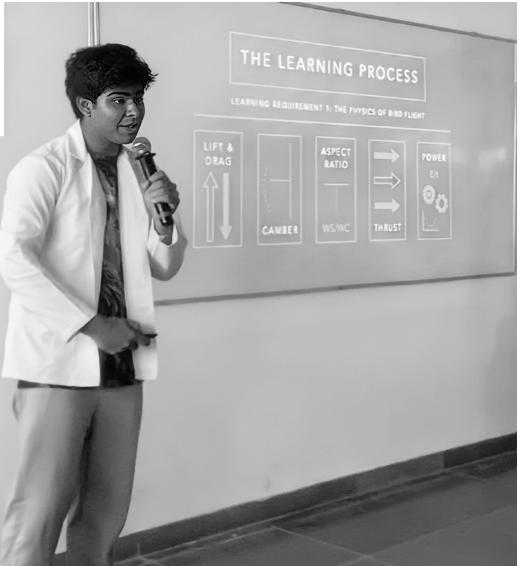
I also applied information literacy skills when verifying the information that I received through my inquiry by corroborating information from websites with more reliable sources such as the Handbook of Bird Biology, something that I had not actively done prior to this project but learnt the importance of to simplify a difficult topic for a layman like me to understand. Applying this in my own videos improved my ability as a communicator, such as using Mr. Majumder’s analogy of a bird as a traveller to explain migratory gateways. I was also a communicator when communicating with and interviewing various experts. Prior to this project I had mainly relied on self-paced study courses and websites for information, but listening to experts helped me improve my own ability to communicate by learning from the way they managed to simplify a difficult topic for a layman like me to understand. Applying this in my own videos improved my ability as a communicator, such as using Mr. Majumder’s analogy of a bird as a traveller to explain migratory gateways.
The most important ATL skill I applied was social skills. While I had not applied it nearly as much as the skills spoken about in criterion B, it was by far the one that I improved on the most. I vastly improved my ability to listen actively to other perspectives and ideas when actively analysing the answers from experts and comparing their perspectives on the topic. While in most school work I am often quite knowledgeable and only consult my prior understanding, in this project I had much to learn and it was imperative that I understood other perspectives and ideas actively to build my knowledge on the topic. An example of this is how I actively took notes and transcribed all the answers from the interviews into a 4,000 word document from which I gleaned important details to put into my body of knowledge. Receiving meaningful feedback was also an important part of my development. Showing my videos to friends, family and teachers and receiving their opinion on them helped me learn to take criticism well, something that I have struggled with in the past but can now say that I have improved on. An example of this is how I received constructive feedback on my animation on camber and how the colour scheme and design conflicted, instead opting for a simpler, cleaner aesthetic. I can take this skill further by applying this new open-minded mindset in my group work, and look at feedback on my own classwork objectively.
The impact on me as a learner has been profound. Undertaking a personal project as ambitious as this has taught me that when faced with a challenge, I should look for solutions instead of excuses to cut corners. When faced with a difficult animation of capturing the flight of an Arctic Tern, instead of settling for stock footage I decided to analyse preexisting flight patterns and animations to create the desired graphic. However, this project also taught me not to take this to an extreme and chase the unachievable. Choosing a simpler style of animation after spending 7 hours on 20 seconds of footage is something I am extremely proud of. Instead of being disheartened, I chose to pick myself up and understand the limits of my own ability. In the future I plan to keep pursuing this line of scientific inquiry, delving into ornithology and ecology, perhaps even opting for environmental sciences or environmental law in higher education. Learning never ends, it just takes place in new forms.
Enabling access to equal opportunities by attempting to provide a means of experiencing color for blind people who otherwise have no medium to do so
Using ideas from different perspectives to create a cohesive system that attempts to universalize “color”
Using external structures of different textures to convey the idea of different colors
Generating multiple ideas for both the actual form of the product (jewellery kit) as well as the representations of colors through textures
Communicating with the target audience for the product (blind people) to understand their needs, as well as communicating with manufacturers to ensure that designs were properly and realistically prototyped
Developing a thorough understanding of the relationship between blind people and color (as well as other life experiences) to help shape the product
What toys/technologies for blind children are already available in the world? (regardless of price/availability)
What are the primary needs of blind children in terms of the functionality of a toy?

What are the major toys for blind children in India?
What difficulties to blind children face during education in India?
What are the strengths and limitations of toys already available for blind children?
What is the current state of blind schools in terms of resources in India?
How have pre-existing toys for blind children been developed?
How do you go through the stages of the design process? (design thinking)
How is the design process applied to the development of a toy?
How do blind people perceive concepts inaccessible to them? (eg. color)
While not facing many challenges while achieving my learning goal, as it was an independent endeavour, the breadth of my challenges came while creating my product. I faced troubles while developing my ideas. This wasn’t due to a lack of creative thinking - but rather due to the sheer amount I had to come up with. While at first 30 did not seem like a daunting number, to come up with 30 unique, practical and innovative solutions to a problem was exceedingly difficult. However, it proved to be a necessary practice as it was only the last few ideas through which my final product was borne. I overcame this challenge by keeping frustration at bay and taking breaks when it didn’t seem like I was able to generate anything of value anymore. This was extremely effective, and allowed me to skip over most unoriginal, plain ideas, by simply allowing myself to reset before continuing, ensuring a fresh mindset and perspective before I dove in. The second large issue I faced was during the product manufacturing process. I naively believed it would be a simple process as I was prepared with all my renderings to be printedhowever this proved not to be the case. This part of the process tested my skills of communication the most, as there was constant back-and-forth between the manufacturer and I. Mishaps did occur due to faulty communication, such as a prototype being printed 7 times larger than it was meant to.
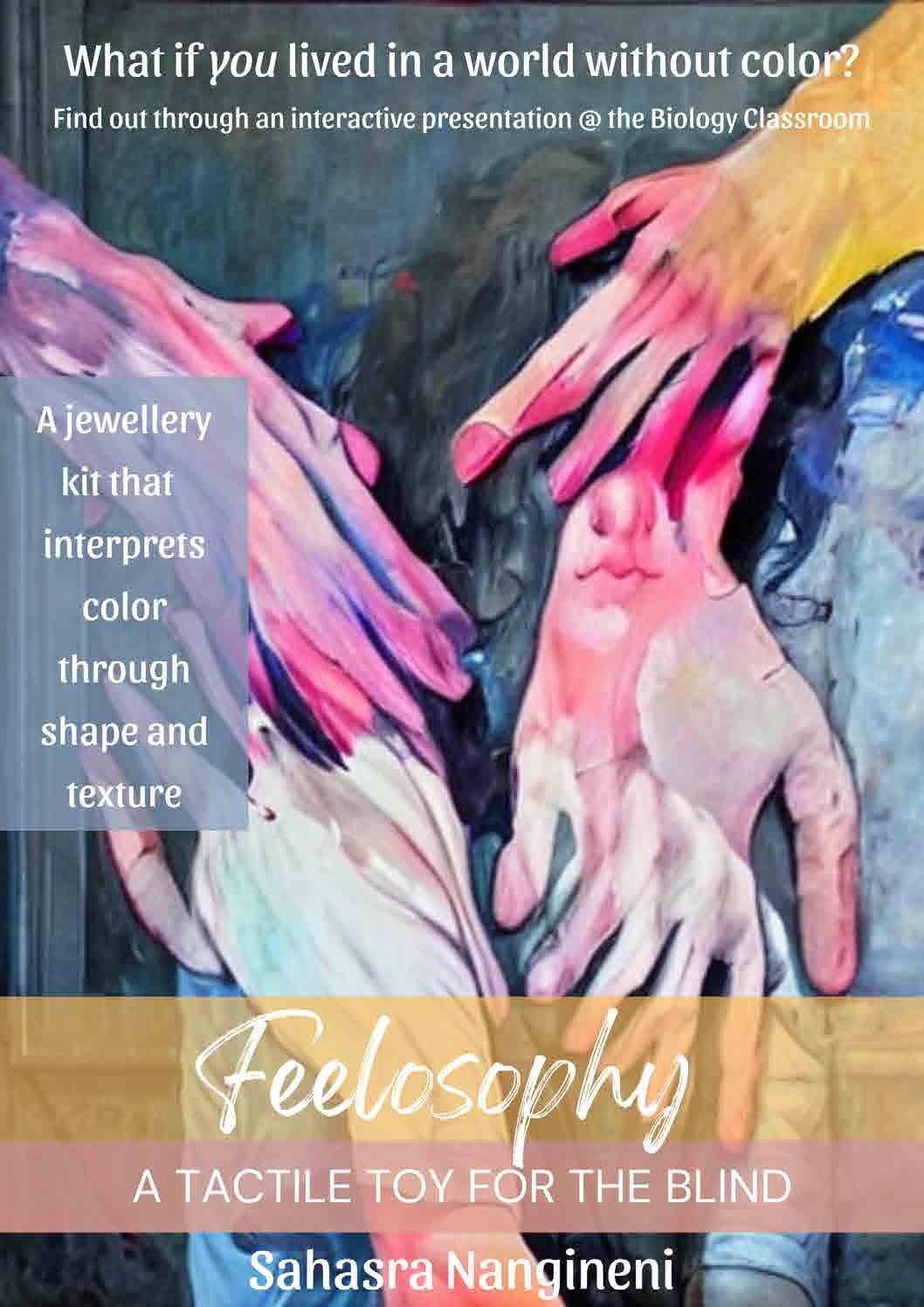
Thankfully, due to perseverance, all doubts were resolved and the final product was able to be printed, after many clarifications of requirements from both sides, and multiple changes and adaptations I made to my models. The experience taught me to be far more realistic when it comes to interacting with third parties, as they are not mind readers and it is up to me to be as clear as possible the first time I propose anything.
My previous understanding of design was plagued with misconceptions, which I have since resolved, while being knowledgeable. Initially, I believed it to be a very straightforward process, especially as I only understood it through five clear-cut steps of empathising with an audience, defining an audience, ideating to solve, prototyping the idea and then testing it from my initial research. However, I learnt that quantifying the process of designing something into steps does not actually break down the complexities and intricacies of the task. I did this by developing my conceptual understanding of design through practising it. This was an important realisation for me, as I’ve always considered myself as a “big picture person”, who doesn’t necessarily focus on each and every aspect of any concept. This realisation only came about my application of this process to my own project, attempting to cover each step, and would have unlikely come about had I simply bound my knowledge to “book knowledge” instead of applying it.
Furthermore, engaging in this design process made me a communicator. This began with the very first step of the process, where I had to think from the perspective of the audience. This required me to communicate with them in an effective way so I could really gain a holistic understanding of their views. As I attempted to do this, I realised that putting myself in another person’s shoes was not going to be as easy as it seemed. However, as I was required to communicate more and more throughout the project - such as in interviews, requests to receive feedback, communications with manufacturers, I significantly improved this skill, which was a weak area of mine before, and was able to put my thoughts into words and communicate ideas effectively. This was a key skill of mine that I used, as the perspectives and feedback of others, which I would not have received without accurate communication of my ideas and products, were an integral part of the project and allowed me to constantly improve on whatever I was doing throughout.
This, along with a range of trial and error allowed me to grow from my experiences, as I evaluated past mistakes I made and rectified them further along in the process, making me significantly more open minded when it came to accepting help from others. This was a new practice for me, as I am personally a very independent person who generally dislikes taking help. However, by doing so, I took on the role of a thinker, having to use the new perspectives and experiences I had to critically analyse and solve problems through the course of my project. This included objectively judging my own ideas while picking a final product, as well as needing to develop my creative thinking skills by being as “out of the box” as possible in order to create a unique, yet practical final outcome as a solution to the problems I attempted to tackle through the creation of the toy.
This project has given me the opportunity to learn more about the process of design, which I was always fascinated by, but never formally introduced to. I have learnt about techniques such as “CUP56” through which I was able to understand the value of generating as many ideas as possible, because the first is rarely the best. Furthermore, I learnt the value of visual representation as a medium to communicate ideas - without which creating ideas would have been far more difficult. I practised this in two ways. One was with my practice of drawing techniques as a method to plan out ideas. Through this, I gained skills regarding design sketching, including how to model ideas using different perspectives (such as top view, front view, side view) to scale in the form of a blueprint with specific measurements, in a far more structured manner than I was used to. This can be seen in a blueprint of one of the other ideas I almost pursued. The other was with my use of CAD applications to create a multitude of digital models as a preliminary step before prototyping. Through this, I gained skills regarding the use of CAD applications to model 3D objects and familiarised myself with their controls to create different components. Aside from the skills I gained, I also understood the concept of the five step design process - empathising, defining, ideating, prototyping and testing, and how to apply it while creating a product, as it was through a firsthand experience through which I applied it. Aside from design-related knowledge I have also gained significant knowledge in terms of my understanding of the lives of blind people.
Before this project, I wrongly assumed that the biggest disadvantage of their disability would be difficulty of navigation and accessibility to education - however this assumption was soon rectified during my research and interview of the blind students themselves. I learnt that despite their disabilities they were still able to receive a somewhat holistic education, even with the limited resources they were provided, learning braille on newspaper instead of proper braille sheets, using the few books they had to expand their knowledge and vocabulary, and even being able to achieve fluency in more than one language. Their real problems were far more deep - problems which had never even occurred to me. This included experiences such as going to a museum, as they were unable to touch anything, and being unable to visualise or imagine anything (if blind from birth) and having major difficulties in understanding descriptions of any tangible object in the conversations they heard around them. Even the lack of concepts such as colour was a significant disadvantage to them growing up. I soon realised that the misconceptions I held were also something a lot of blind toy manufacturers held - creating products such as boards with every braille letter written on them which were fast exhausted with a few uses, but sold for an exorbitant price. Therefore, through the project, I understood far more about the struggles of blind people. However, I also learnt how capable and determined they still manage to be even with extremely limited resources to help them, innovating in their own way and being able to solve their problems with unique perspectives.
This project has provided a great opportunity for me to gain an insight into the field of design, specifically product design. However, I believe the most valuable takeaway I have gained from this is problem-solving experience. Although I’ve always been inclined towards tasks that require problem-solving and critical thinking, this project has allowed me to step out of my comfort zone and apply this in an area I’m unfamiliar with, and has taught me how to adapt these skills to various situations. This is definitely a learning that I will take forward, as adapting capabilities to new situations is a highly valuable skill at any point, as life is full of curveballs which every person must take in their stride.
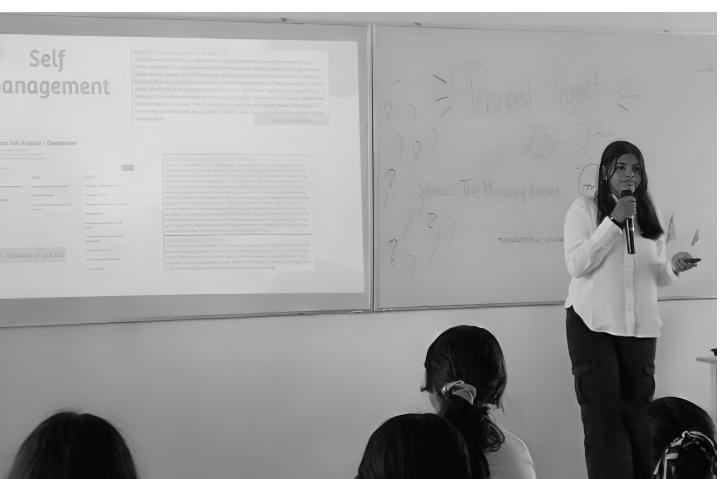
The global context my project is best aligned with would be Personal and Cultural Expression because Mysore painting has a rich history (spanning more than 500 years) and is an integral part of Mysore culture. The project explores the history of ideas and cultures, how Mysore culture has influenced the style and how Mysore culture has been influenced by this style, with my product being my own original Mysore paintings.
My prior knowledge about Mysore culture, including beliefs, values, traditions, architecture and clothing, was extremely important in the creation of my product.
Learning about and following the creative process of producing a Mysore painting and generating multiple thumbnails for my original piece.
Developing and creating my own Mysore paintings by analysing traditional pieces to gain an understanding of the art form.
A tribute to Mysore’s legacy in 24 carats

- How is the festival of Dasara celebrated in Mysore?
- What important events and traditions take place during Dasara?
- How has Mysore painting developed over time (history)?
- What are some famous Mysore paintings & artists?
- Why is the Mysore Dasara a significant part of Mysore history?
- What is the significance of Mysore painting?
- What are the unique elements of Mysore painting?
- What are the different materials and techniques used in Mysore painting?
- What is the general process followed while creating a Mysore painting?
As I mentioned before, when I took up this project I was very much aware that it could prove to be extremely challenging. The biggest challenge I faced was to do with the application of the extremely delicate and flexible, 24 carat gold leaves. The process of applying the gold is rather simple, as all I need to do is transfer the leaf from the booklet onto a piece of cardboard by applying a layer of water to ensure it clings on. After that using a scissor I’m supposed to cut the gold into any shape and size I require, and then transfer it onto the selected part on the painting where I’ve applied the glue. Even though I had learnt the skill of application, the first few times that I had done it I was guided by a professional artist (my teacher). When it came to applying it in my own work it proved to be quite difficult which slowed down the process. The only way I could deal with this challenge and overcome it was by being patient and seeing it through because without applying the gold I couldn’t move on to the next step which was painting because 1) this is the order in which I had learnt to produce a piece and 2) it may have affected the authenticity of the piece which is a part of my success criteria. However, because I slowed down and tried my very best to complete applying the gold I was able to reflect on all the mistakes I was making, like taking too long to place the gold after applying the glue which would result in most of the gold not sticking. Even though it took time, as I progressed I was able to understand where I was going wrong and correct myself in order to refine my skills and improve the quality of my work.

This project was extremely rewarding in terms of all the skills I developed such as creative thinking and research and the new knowledge I gained over the course of the past few months about the style like the fact that the architectural designs in traditional paintings are replications of the designs in the Mysore Palace’s architecture to honor their culture. Not only this, but the project also allowed me to fulfill other goals of mine, the first one being that I got to inform so many more people about Mysore painting and explain the cultures and traditions that I portrayed through my work such as the coronation of the last king of Mysore and about the procession on the last day of the Dasara celebrations. I got to accomplish this through an extension of the project which was displaying my work in an art exhibition, where I got to share it with an audience, gain feedback from them and also teach them a bit about the art style. For instance I spoke to them about the general process of Mysore painting, including the process of creating gesso which is then applied as an emboss, and the use of the gold leaves to cover the emboss. Adding to this I also managed to raise funds by selling prints of my work in the exhibition, which contributed to my SAA project of volunteering with and raising funds for the Snow Leopard Conservancy, an NGO based in Ladakh, India. I think this project had a great impact on me and allowed me to make an impact on my community, even if it was a minor one. I am glad that I got an opportunity to learn Mysore painting, because it has provided me with skills such as making and applying gesso that I can use in the future to produce more such paintings, especially replications. Of course I have a long way to go as I need to work on these very skills but as I become better I could even pursue this as a profession. It has also taught me a great deal about the importance of patience and following through with the creative process. Overall, I have learnt to appreciate my family culture and got to see how far back our traditions go, especially the Dasara traditions which go back more than 20 generations.
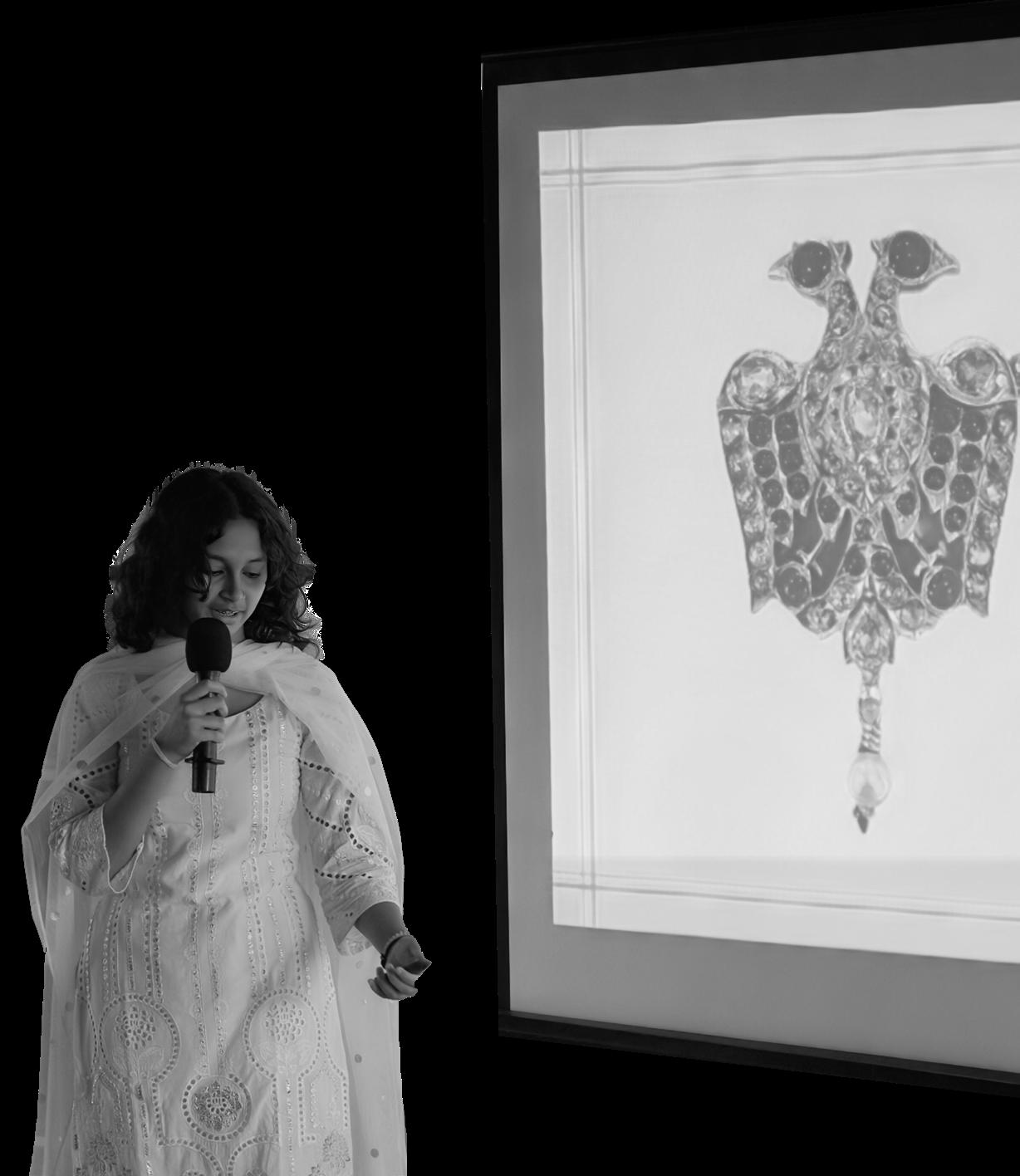
I addressed the issue of procrastination through animation, which aligned an interest and personal challenge of mine.
The key concepts that can be identified for your project
Developing and creating a personal style and aesthetic of animation that takes inspiration from animators.
Visual communication was a keystone in my project, and I needed to blend visual elements with storytelling to communicate the problems and solutions of procrastination.
Combining inspiration taken from existing animators and my own artstyle, while coming up with novel ways to represent the problems of procrastination.
The relationships between the causes and consequences of procrastination, the impact that the environment has on the problem and ways to solve them.
Presentation Link
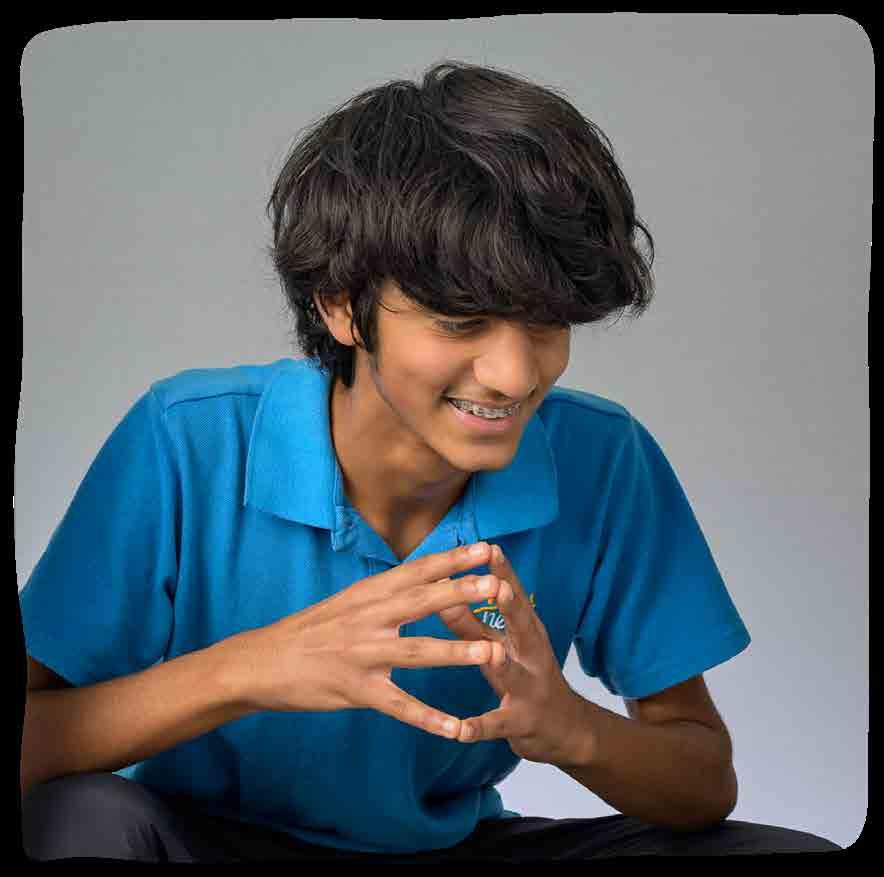
Knowledge Questions
What is animation?
Styles of animation I want to replicate and I like?
Analysis of animation styles?
What style of animation to incorporate is most feasible for me, what can I take away?
Components of an animation?
Components of a film?
Components of a story?
What is procrastination?
Causes of procrastination?
Consequences of procrastination?
Behavior during procrastination?
Solutions to procrastination?
Concept Questions
How to tell a good story (implicitly)?
How to tell a story through cinematography and art?
Skill-based Questions
Basics of animation?
12 principles of animation?
How to make good character design and development?
How to make background and composition development for animation?
How to convey movement and rhythm in animation?
Lighting, camera movement and cinematographic elements in animation?
One of the primary challenges I faced in my project was overambitious goals, combined with perfectionism. This challenge arose on multiple occasions through my project, starting with ideation where at first I had an extremely complicated idea, with an expectation of my animated film running 5 minutes long. I quickly came to realize that this was not feasible, and I came to this realization with the consultation of a filmmaker and scriptwriter and also discussing with my peers and art teacher. Following this I cut down my animation to two minutes in length, and this allowed me to simplify my idea, of course considering the necessary requirements of the film. Furthermore, I had initially planned to create my animation in full color however after realizing the amount of time it takes, I decided to stick to value alone. Although I felt that shading in black and white lacked depth and engagement, it did not have enough highlighting features and thus I decided to add lighting as well to ensure that there is variation and an interesting scene to look at while also having time to finish the animation. Both of these decisions were ways that I was able to solve my problem of perfectionism that was a major cause for my procrastination, along with allowing me to be a more open-minded learner, and learn how to adapt to different situations and make the best of it. Acquiring knowledge and skills related to animation and procrastination will benefit me and are already benefiting me greatly.
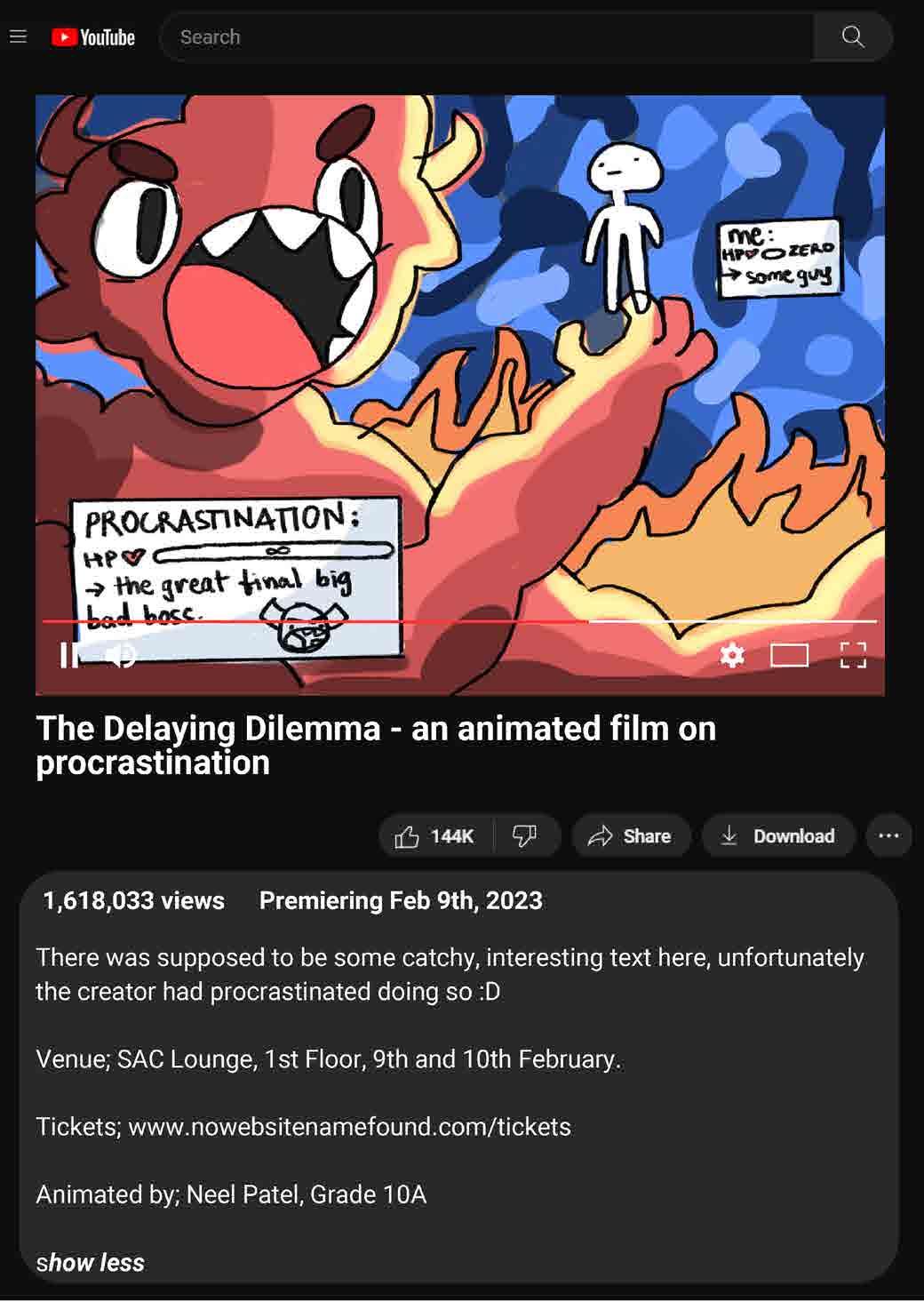
Having understood myself and the reason I procrastinate, I have been able to slowly implement techniques to prevent my procrastination, and have reduced overthinking and perfectionism in other subjects that I take as an MYP student such as Visual Arts, where I often found myself facing the same problem that I do not any longer. Slowly taking steps to solving procrastination allows me to not only have a better work ethic, but also pursue my interests and passions without any inhibitions and barriers that were once posed because of procrastination. It also allows me the potential to research more into psychology, which is a subject that I have been considering, and potentially help others through the problem.
Furthermore, learning how to animate opened up numerous pathways for my future, with a possibility of a career in animation being the main one. Additionally, I wish to further my skills and knowledge in animation by continuing to create animations, maybe on various other topics that teenagers struggle with so I can have an impact on my community alongside it as well.
My goal behind Personal Project was to learn how to animate, and understand procrastination in teenagers, from this there are two major fields under which I gained knowledge; procrastination and animation. First, prior to engaging with research in procrastination, I had a lot of misconceptions about why people procrastinate and how to solve them, especially a misunderstanding of why I myself procrastinate. Initially, I thought that the cause for my procrastination was boredom, or else I would unconsciously procrastinate without realizing I was doing so. However, after extensive research through medical journals and articles, and reaching out to psychologists, child counselors and doctors, I was able to study procrastination in a detailed manner. Through this I understood that there were six main causes of procrastination; overthinking, overestimating the time available for a task, underestimating the task at hand, perfectionism, fear of failure and boredom. This in turn helped me understand solutions to the problem, because procrastination is an issue, I came to realize, cannot be solved by a single solution that can be applied everywhere, it depends on the cause of procrastination and the person itself and thus I came to recognize that understanding yourself is crucial to understanding procrastination. As an MYP student, this connects to the learner profile of ‘reflective’.
Throughout the project, from researching to illustrating for the animation, I would constantly reflect on my behavior and tendencies in an attempt to understand and rectify why I procrastinate. An example of this is when I started off animating, because of a combined reason of fear of failure and perfectionism, I procrastinated starting the actual animation and instead spent a lot of time on trial animations which I did not necessarily need. Furthermore, in the initial stages of shots, I would create multiple versions of the character or scene to make sure everything looked alright. Upon realizing the issue I was facing, I reduced overthinking and refrained myself from continually reworking on shots when it was not required.
Second, animation was a field that I was completely unfamiliar with, however it was a passion of mine and the project allowed me to explore it. I consulted various different YouTube videos and tutorials, as well as animators and filmmakers for information on animation. I came to realize that besides having some foundational skills and knowledge in art, anyone can start animating after understanding the 12 principles of animation, out of which for beginners I understood that the principles of; squash and stretch, slow in and slow out, anticipation, timing, straight-ahead and pose to pose, and follow through are the most important as they allow an artist to bring characters to life and to give them movement, the other six can be developed later on and are more to make the animation more polished and professional.
Besides this conceptual knowledge, I was able to develop my ability of animation and being able to draw frames repeatedly for frame-by-frame animation. Again, as an MYP student two learner profiles I was able to develop were inquirer and communicator. I found myself constantly looking into information about animation, learning about the process, character and background design, cinematographic elements, styles of animation and more using not only articles and videos but also interviewing animators who are working in the field itself to gain an in-depth understanding. Additionally, I developed as a communicator due to the need of communicating the story of procrastination through a visual, non-verbal medium in an entertaining manner that ensures that the message is conveyed.
Overall, the project had allowed me to not only solve a problem that I faced; procrastination, but also do it alongside learning about and finally exploring a passion of mine; animation.
Aside from design-related knowledge I have also gained significant knowledge in terms of my understanding of the lives of blind people. Before this project, I wrongly assumed that the biggest disadvantage of their disability would be difficulty of navigation and accessibility to education - however this assumption was soon rectified during my research and interview of the blind students themselves. I learnt that despite their disabilities they were still able to receive a somewhat holistic education, even with the limited resources they were provided, learning braille on newspaper instead of proper braille sheets, using the few books they had to expand their knowledge and vocabulary, and even being able to achieve fluency in more than one language. Their real problems were far more deep - problems which had never even occurred to me. This included experiences such as going to a museum, as they were unable to touch anything, and being unable to visualise or imagine anything (if blind from birth) and having major difficulties in understanding descriptions of any tangible object in the conversations they heard around them. Even the lack of concepts such as colour was a significant disadvantage to them growing up. I soon realised that the misconceptions I held were also something a lot of blind toy manufacturers held - creating products such as boards with every braille letter written on them which were fast exhausted with a few uses, but sold for an exorbitant price. Therefore, through the project, I understood far more about the struggles of blind people. However, I also learnt how capable and determined they still manage to be even with extremely limited resources to help them, innovating in their own way and being able to solve their problems with unique perspectives.
